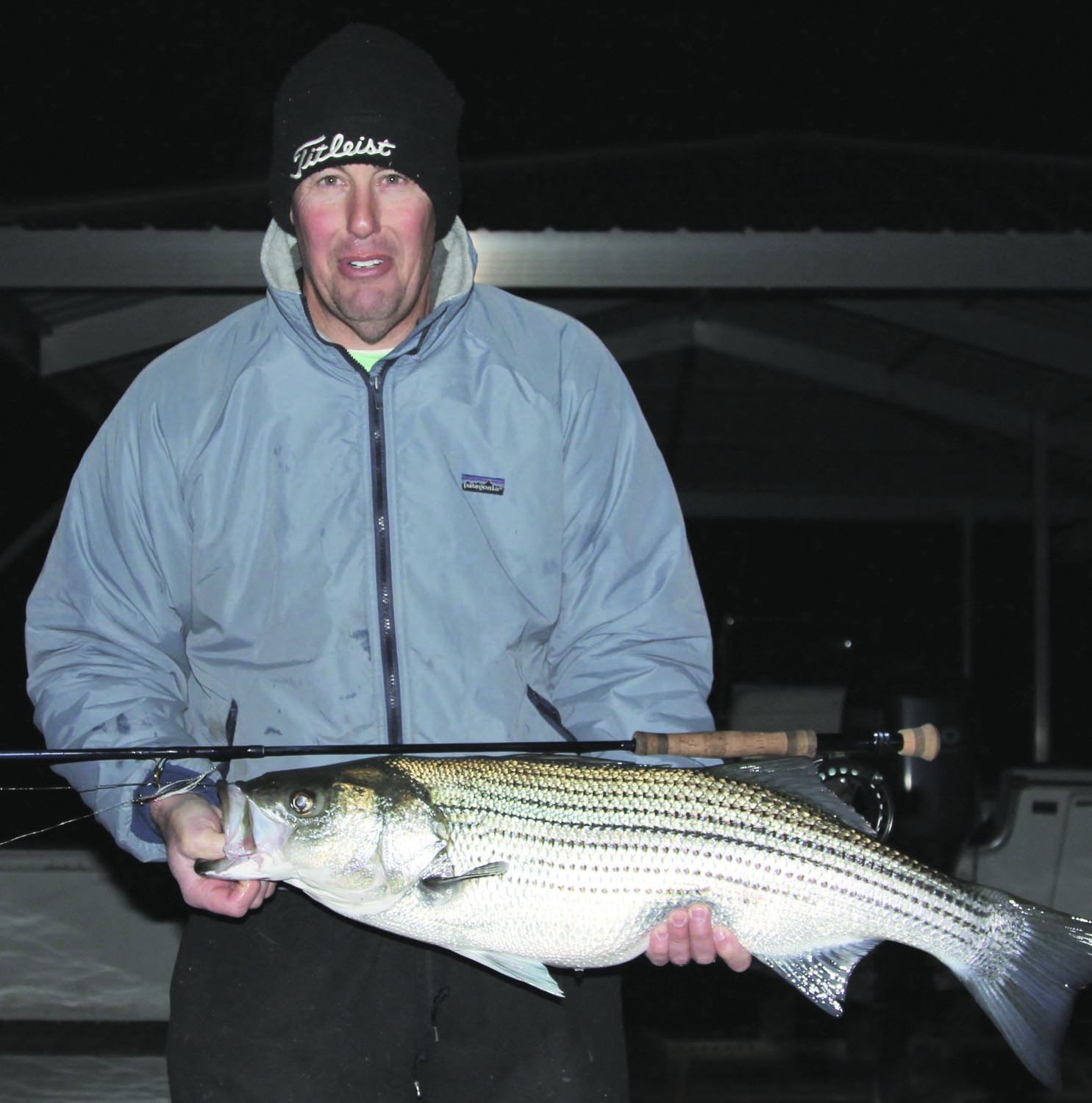by Henry Cowen
December 2016 was positively the best month to be fishing on Lanier and once again should be producing fish for fly-rodders. One change over last year to this year is that the lake level on Lanier is coming back up. As of November we are 5 ½’ below full pool. The good news is that Lanier seems to be trending as a threadfin shad lake again, and for the fly angler that is a good thing. More threadfin shad means more surface feeding fish.
The pattern of fish on the south end should change as the fish will start pushing further north and away from the lower end of the lake. Fish can be spread out as they start searching for food in pockets and creeks. This means that you will need to use your binoculars to look deep into the backs of the creeks to find fish eating small threadfin shad in some fairly shallow water.
The topwater bite will continue into December, however, where they feed on top will radically change. By mid-month you can expect to see fish pushing bait and feeding in between docks in the smaller creeks. Sometimes they might be at the mouth of the creek, while other times they will be way in the back of the creek.
This is the time of the year that we let the wildlife guide us to the fish. The bird life on lakes can be the key to helping you find a school of fish either on the surface or subsurface. The obvious wildlife to look for are terns and gulls diving on bait being pushed to the top. Remember though that terns and gulls will not fly to the backs of the coves, so that is where your binoculars can be very relevant to finding surface feeding fish.
Kingfishers seen flying around a particular area and squawking while diving on the water to pick up a threadfin shad is also a dead giveaway. Herons standing stealthy on a bank is a certain sign of baitfish in the area. Look for loons going up and down in a particular area and not straying too far as another hint of both baitfish and stripers. This is the time of the year when the loons will work together with the stripers to corral the bait. First you see a loon dive under water and make a splash, and then a big ole striper will boil on top where the loon was. It is a wonderful sight to see.
Anglers need to carry both an intermediate line for surfacing fish or fish running the banks as well as a sinking line for those big schools found on your fish finder. If you encounter that group, then using the countdown method will get your fly to the fish below. Most sinking lines will fall at a rate of 6 inches per second. So if you see fish at 15 feet below, then a countdown of 30 seconds puts your fly in the feeding zone.
Small flies are still the ticket as the stripers are gorging on 1”- 1 ½” long threadfin shad. My Somethin’ Else pattern is still the best fly to use, but Gummy Minnows will also work. Remember to pause between your strips in order to allow the fly to free fall like a wounded shad. That is the money retrieve and may be the single most important technique you can use to trigger a bite!
The dock light bite will be in full swing too. If you are willing to wake up an hour earlier or stay out on the lake for 90 minutes after dark, YOU WILL BE REWARDED! These fish are easy to feed and can be found all over the lake. Late fall is always a tad chilly but dress warm, bring some coffee for you or cocoa for the kids and have a ball.
Wishing every one of our Angler Magazine readers a very Merry Christmas or Happy Hanukkah. See you on the pond.
